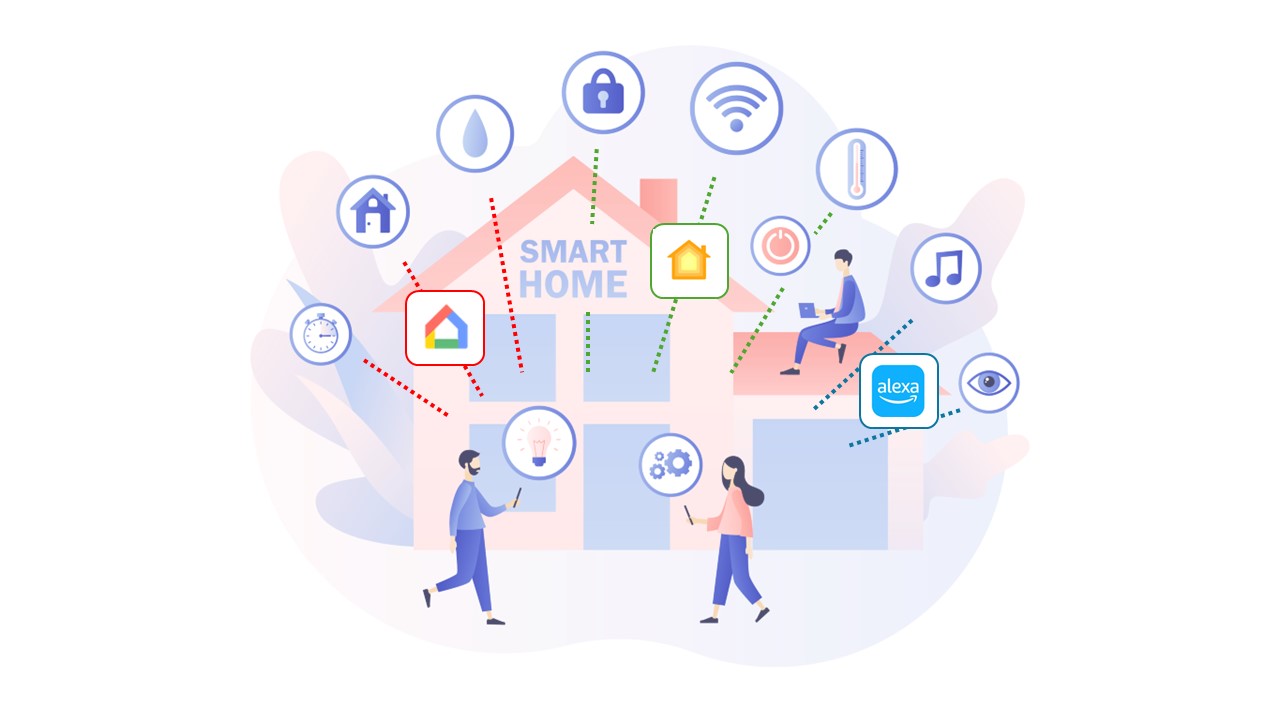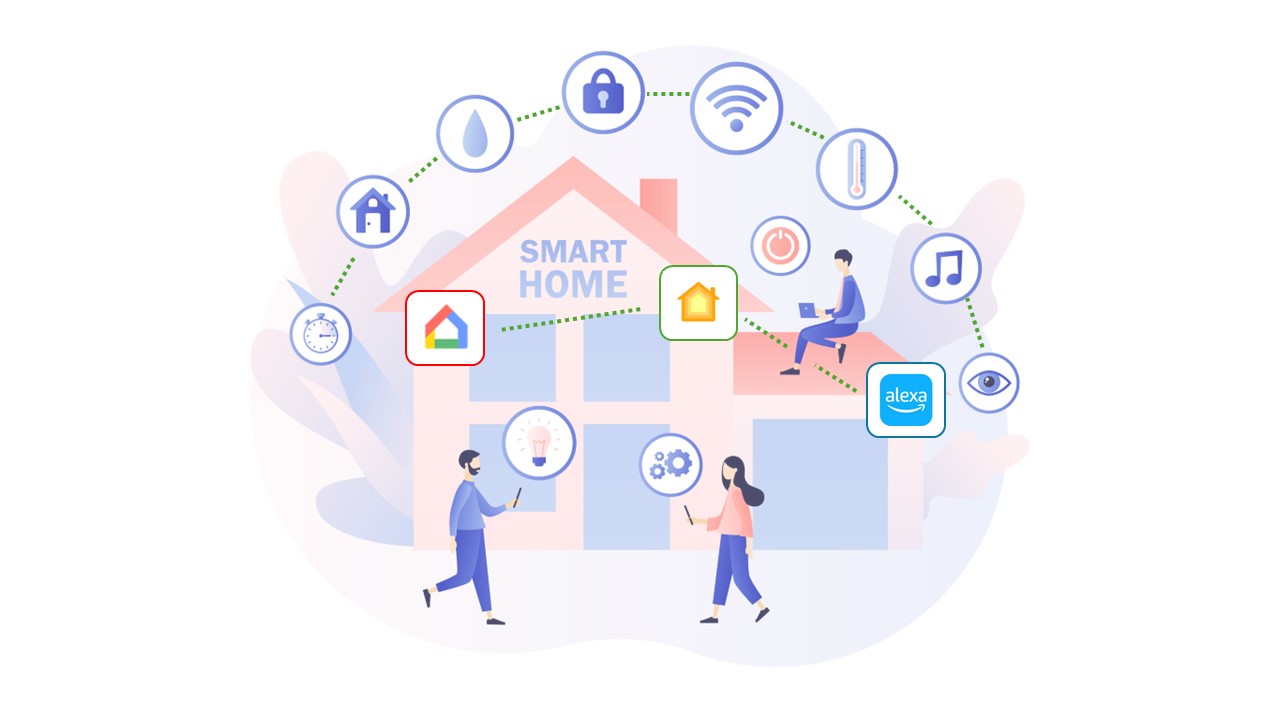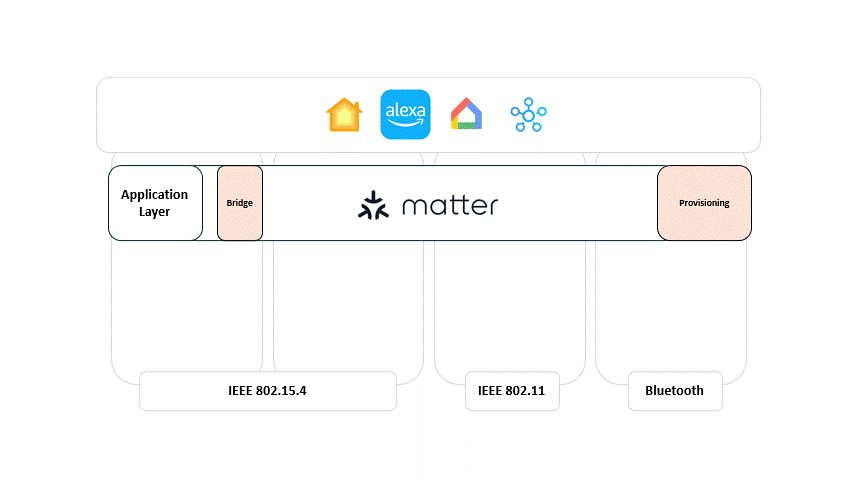
The New Smart Home Standard
The Matter smart home standard is a new protocol developed by the Connectivity Standards Alliance (CSA), along with Apple, Amazon, Google, and Samsung, starting from 2019. Matter 1.0 aims to address the lack of a universal connectivity standard among smart home appliances. Since its launch in 2022, it has garnered global attention and attracted responses from other international brands such as IKEA, Siemens, and Huawei.
What networking technologies does Matter use?
Matter is based on IP (Internet Protocol), which means it can utilize existing network infrastructure such as Wi-Fi and Ethernet for device communication. Additionally, Matter supports Thread, a low-power, low-latency mesh networking technology suitable for small devices in smart home environments. Matter also employs AES-128 encryption to ensure data transmission security and utilizes Public Key Infrastructure (PKI) for device authentication.
Challenges of Smart Homes Without Matter
Compatibility Issues
Smart home devices from different brands may use different communication protocols and standards, making it difficult for them to connect and work together. For example, some devices may only support specific smart home platforms (such as Apple HomeKit, Google Home, Amazon Alexa), forcing consumers to choose a single brand or platform, limiting flexibility.
Complex Setup and Management
Each brand and device may require a separate app for setup and management, increasing complexity and inconvenience for users. Users need to learn how to operate multiple apps, and each app may have a different interface and usage method, causing inconvenience.
Data and Privacy Issues
Each device and platform may have different privacy policies and data handling methods, making it difficult for users to uniformly manage and protect personal data.
Limited Scalability
Due to compatibility issues between different brands and devices, users may need to consider compatibility when adding new devices or upgrading existing systems, increasing the difficulty and cost of expanding the system.

Without Matter
Advantages of Smart Homes With Matter
Cross-Brand Compatibility
Matter, as a unified standard, allows smart home devices from different brands to be compatible with each other. This means users can freely choose devices from different brands without worrying about compatibility issues, enhancing flexibility and choice.
Simplified Setup and Management
Matter provides a unified standard for setup and management, reducing the need for users to learn and operate multiple apps. Users can manage all smart home devices through a single platform or app, making operation simpler and more convenient.
Enhanced Data Security and Privacy Protection
Matter emphasizes data security and privacy protection by design, offering unified privacy policies and data handling methods, making it easier for users to manage and protect personal data.
Better Scalability
Users can more easily expand and upgrade their smart home systems without worrying about whether new devices are compatible with existing ones. This not only reduces the difficulty and cost of expanding the system but also makes the smart home system more flexible in meeting future needs and technological developments.

With Matter
The Matter Consists of Several Parts :
Application Layer:
Defines device functionalities and data models, enabling different types of devices to understand and interoperate with each other.
Network Layer:
Supports various network technologies including Wi-Fi, Ethernet, Thread, and Zigbee bridge, ensuring connectivity and data transmission between devices.
Security Layer:
Provides robust encryption and authentication mechanisms, ensuring the security of communications between devices.
Protocol Layer:
Manages device discovery, pairing, control, and status synchronization functionalities.

NDS Technology can solve the challenges you face in smart home applications by providing professional wireless technology advice. We offer suitable recommendations and design and production services for both the hardware and software architecture needed in your applications. If you encounter any issues in the following areas, please feel free to contact us.
Smart Home Application
Cloud/Server :
IoT devices can connect to cloud or server platforms via Wi-Fi, 4G LTE, 5G NR, Ethernet, etc., enabling connectivity and communication between IoT devices and users. These platforms manage device management, data storage, data analysis, and processing.
User Devices :
IoT devices can be controlled and monitored through applications or software. These applications run on devices such as smartphones, computers, etc., allowing users to control and monitor IoT devices.
IoT Gateway :
An IoT gateway collects information from IoT devices within a local area and communicates bidirectionally with platforms via Wi-Fi, 4G LTE, 5G NR, Ethernet, etc.
IoT Devices :
Devices refer to physical objects such as sensors, monitoring cameras, smart home devices, etc. These can connect to IoT platforms through gateways and communicate and exchange data over networks.

NDS provides design and development support as well as production and manufacturing.
Get in touch and learn more.

